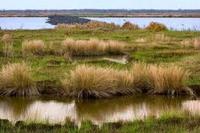-
U.S. formulates strategy for a new Arctic landscape
U.S. national security officials have become increasingly concerned about the national security implications of an ice-free Arctic. The Arctic will become ice-free during the summer by mid-decade. In a strategy document, the Pentagon says: “Melting sea ice in the Arctic may lead to new opportunities for shipping, tourism, and resource exploration, but the increase in human activity may require a significant increase in operational capabilities in the region in order to safeguard lawful trade and travel and to prevent exploitation of new routes for smuggling and trafficking.”
-
-
Canadian city developed mathematical formula to evaluate risk
The City of Hamilton, Ontario has ranked Terrorism fourth on its list of top ten emergency risks, below Hazardous Materials and Explosions, Energy Supply Emergencies, and Epidemics/Pandemics.The city’s ranking of top 10 emergencies for which it plans is not a mere judgment call: The city’s emergency management office uses a mathematical equation to rate the risks to the city and its population.
-
-
Maryland preparing for sea level rise
Maryland has 3,100 miles of tidal shoreline. A scientific report recommends that it would prudent for the state to prepare for a sea level rise of 1.4 feet by 2050.Maryland’s CoastSmart Communities Initiative (CCI) provides grant funding for coastal communities which want to reduce their vulnerabilities to the effects of coastal hazards and sea level rise by becoming ready, adaptive, and resilient.
-
-
Maryland preparing for sea level rise
Maryland has 3,100 miles of tidal shoreline. A scientific report recommends that it would prudent for the state to prepare for a sea level rise of 1.4 feet by 2050.Maryland’s CoastSmart Communities Initiative (CCI) provides grant funding for coastal communities which want to reduce their vulnerabilities to the effects of coastal hazards and sea level rise by becoming ready, adaptive, and resilient.
-
-
Budget impasse halts enforcement of chemical plants safety standards

Security experts say that short of a direct nuclear attack on a U.S. city, the most dangerous, mass-casualty catastrophe the United States faces is a terrorist attack on, or an accident in, a chemical facility which would release toxic clouds over neighboring cities and towns. The federal government partial shutdown is making it impossible to enforce safety and security standards formulated to strengthen the ability of thousands of U.S. chemical facilities to withstand terrorist attacks.
-
-
Halt of CFATS work disrupts debate over program’s merit
The budget impasse-related halting of monitoring and enforcing compliance with the 2007 Chemical Facility Anti-Terrorism Standards (CFATS) comes at a time of growing criticism of the measure by GOP – but not only GOP – lawmakers, who complain that there are too many problems with CFATS and the way it has so far been implemented.
-
-
U.K. launches cyberwarfare reserve force
U.K. defense secretary Philip Hammond announced that the Ministry of Defense (MoD) has begun this month to recruit the country’s top IT specialiststo join the Joint Cyber Reserve Unit (JCRU). “In response to the growing cyber threat, we are developing a full-spectrum military cyber capability, including a strike capability, to enhance the U.K.’s range of military capabilities,” Hammond said.
-
-
Bipartisan cybersecurity measure to be introduced in Congress
Senator Saxby Chambliss (R-Georgia) last week said he was “very close” to introducing legislation which would encourage the private sector and government agencies to share information regarding cyberattacks. Chambliss has proposed a government “portal,” operated by DHS, to handle information coming from the private sector. Privacy advocates welcome the proposal for a civilian agency like DHS to operate the information sharing “portal” (in earlier versions of proposed cybersecurity legislation, the NSA was tasked with a similar coordinating responsibility).
-
-
Hitting the road: Redefining infrastructure maintenance
The results of the Remote-Sensing and GIS-enabled Asset Management System, Phase 2 (RS-GAMS2) project, a 2-year, $1.9 million research enterprise, were released in late August. The project promises to revolutionize the way U.S. roads are inventoried, managed, and maintained. Sponsored by grants from the U.S. and Georgia Departments of Transportation, a multi-disciplinary team of researchers has been developing the system for the past two years, using 18,000 miles of Georgia roadways as their laboratory.
-
-
Guardrails made safer with impact-absorbing Mediterranean tapeweed coating
Researchers have developed protective guardrails from residue of Posidonia oceanica,commonly known as Neptune Grass or Mediterranean tapeweed, in order to minimize the risk of injuries on the roads. The waste material is useful for coating the support posts of guard rails on roads so they can absorb and dissipate much of the kinetic energy if a collision occurs, preventing lacerations and amputations in cases in which a human body hits the support post.
-
-
Long-term trend of saltwater intrusion in the Everglades confirmed
Mangroves love salt water, while sawgrass depends on fresh water. Satellite imagery over the southeastern Everglades confirms long-term trends of mangrove expansion and sawgrass habitat loss near the shore. The trend is related to salt water intrusion caused by sea-level rise and water management practices. Changes in water management, such as the implementation of the Comprehensive Everglades Restoration Plan, may help offset the possible effects caused by future salt water intrusion, but restoration may not suffice if sea-level rise accelerates.
-
-
Crumbling infrastructure hobbles U.S. competitiveness

America’s infrastructure has long been denied the investment and attention needed from public and private entities to remain competitive in an ever-growing global economy. U.S. roads, bridges, power plants, airports, utilities, and other critical infrastructure were once the envy of the world. The post-Second World War golden era (that is, golden era as far as investments in infrastructure are concerned) has come to an end, and fewer resources are committed to improving and maintaining the country’s infrastructure.
-
-
Rural California country faces levee dilemma

About 400 homes and rich farmland in District-10 of Marysville, California risk being flooded should the levees protecting the area fail. The levees, stretching over twenty-eight miles, were built in the early 1900s. The area’s low population may be one reason why county officials have neglected making improvements to the levees in District-10. Local opponents of investment in shoring up the levees are worried that if the levees are improved and the area made safer, “It would open the door for more agribusiness type things, but it would also open the door for more subdivisions,” in the words of one of them.
-
-
N.J. coastal wetlands moderated some of Hurricane Sandy’s fury

Monitoring sensors along the New Jersey coast recorded marsh and wetland swelling during Hurricane Sandy. That swelling is an indication of marshes’ ability to absorb some of the storm surge — which, in hard-hit urban areas, had resulted in high water marks up to seven feet during Hurricane Sandy. Resilient, healthy wetlands near coastal areas have a key role in protecting local communities from hurricane-induced storm surges and flooding.
-
-
First ever evidence discovered of a comet striking Earth

The first ever evidence of a comet entering Earth’s atmosphere and exploding, raining down a shock wave of fire which obliterated every life form in its path, has been discovered. The comet entered Earth’s atmosphere above Egypt about twenty-eight million years ago. As it entered the atmosphere, it exploded, heating up the sand beneath it to a temperature of about 2,000 degrees Celsius, and resulting in the formation of a huge amount of yellow silica glass which lies scattered over a 6,000 square kilometer area in the Sahara.
-
- All
- Regional
- Water
- Biometrics
- Borders/Immig
- Business
- Cybersecurity
- Detection
- Disasters
- Government
- Infrastructure
- International
- Public health
- Public Safety
- Communication interoperabillity
- Emergency services
- Emergency medical services
- Fire
- First response
- IEDs
- Law Enforcement
- Law Enforcement Technology
- Military technology
- Nonlethal weapons
- Nuclear weapons
- Personal protection equipment
- Police
- Notification /alert systems
- Situational awareness
- Weapons systems
- Sci-Tech
- Sector Reports
- Surveillance
- Transportation
Advertising & Marketing: advertise@newswirepubs.com
Editorial: editor@newswirepubs.com
General: info@newswirepubs.com
2010-2011 © News Wire Publications, LLC News Wire Publications, LLC
220 Old Country Road | Suite 200 | Mineola | New York | 11501
Permissions and Policies
Editorial: editor@newswirepubs.com
General: info@newswirepubs.com
2010-2011 © News Wire Publications, LLC News Wire Publications, LLC
220 Old Country Road | Suite 200 | Mineola | New York | 11501
Permissions and Policies
